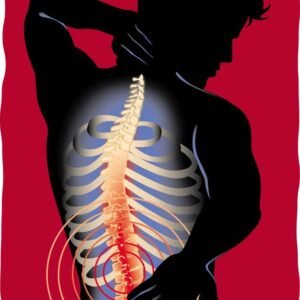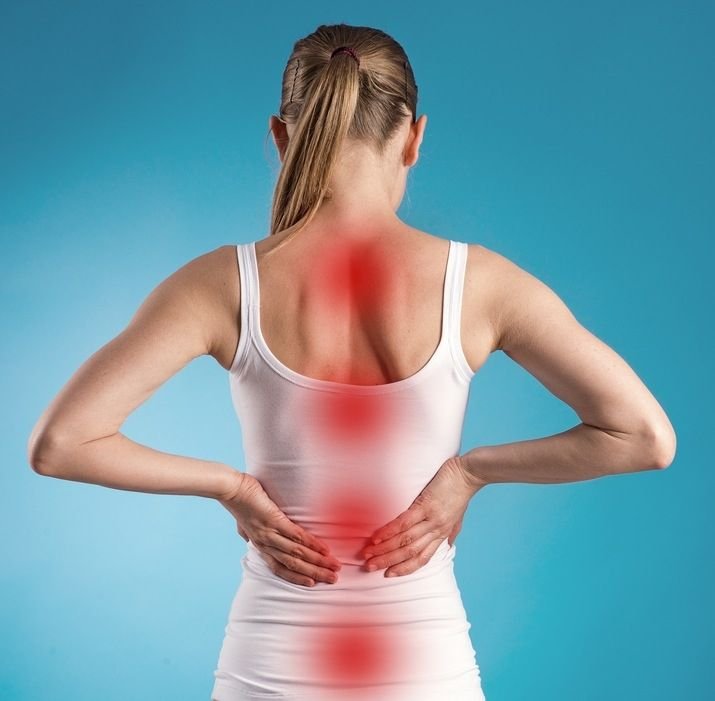Back pain is a common problem that affects millions of people worldwide. Whether it’s due to poor posture, muscle strain, injury, or lifestyle factors, back pain can be both physically and mentally exhausting. The good news is that many forms of back pain can be treated at home with the right strategies. In this article, we will explore the causes of back pain, lifestyle changes, and remedies to help cure back pain naturally and effectively.
Common Causes of Back Pain
- Poor Posture: Slouching at your desk or hunching over your phone can strain the muscles in your back and neck, leading to pain.
- Muscle Strain: Lifting heavy objects without proper technique or engaging in sudden, strenuous activities can lead to muscle pulls.
- Injury: Accidents, falls, or sports injuries can damage the spine, muscles, or ligaments, causing acute or chronic pain.
- Degenerative Conditions: Conditions such as arthritis, herniated discs, or osteoporosis can lead to persistent back pain, especially in older adults.
- Sedentary Lifestyle: Lack of physical activity weakens the muscles that support the spine, making it more prone to injury and strain.
Natural Remedies and Lifestyle Changes for Back Pain Relief
- Exercise and Stretching
Exercise for lower back pain. pic.twitter.com/FGulLFMRMU
— The Secrets of Life (@DSecretsOfLife) October 8, 2024
One of the best ways to alleviate back pain is by engaging in regular physical activity. While it may seem counterintuitive to move when you’re in pain, certain exercises can help reduce discomfort by strengthening the muscles that support your back.
 Heat and cold therapy are simple but effective ways to relieve back pain:
Heat and cold therapy are simple but effective ways to relieve back pain:
- Stretching: Gentle stretches, such as the cat-cow pose or child’s pose, can help relieve tension in the lower back and increase flexibility.
- Core Strengthening: Building strength in your abdominal muscles helps support your spine and improves posture. Try exercises like planks and bridges.
- Low-Impact Aerobics: Activities such as swimming, cycling, and walking improve blood flow to the spine and help maintain flexibility without causing further strain.
- Maintain a Proper Posture
- Apply Heat or Cold Therapy
 Heat and cold therapy are simple but effective ways to relieve back pain:
Heat and cold therapy are simple but effective ways to relieve back pain:
- Cold Therapy: Applying ice or a cold pack can help reduce inflammation, especially if your back pain is due to an injury. Use it for the first 48 hours after an injury for about 15-20 minutes at a time.
- Heat Therapy: Heat helps relax tight muscles and increases blood flow, which can aid healing. Use a heating pad or warm bath to soothe chronic back pain, but avoid applying heat directly to an inflamed area.
- Stay Active and Avoid Bed Rest
- Mind Your Mattress and Sleep Position
- Back Sleepers: Place a pillow under your knees to maintain the natural curve of your spine.
- Side Sleepers: Use a pillow between your knees to keep your spine aligned.
- Stomach Sleepers: This position can strain the neck and back, so it’s best to avoid it. If you must sleep on your stomach, place a pillow under your hips for support.
- Massage Therapy
- Mindful Breathing and Relaxation Techniques
- Over-the-Counter Pain Relief
When to Seek Medical Attention
While most cases of back pain improve with home remedies, there are times when you should see a doctor. Seek medical attention if you experience any of the following:- Severe pain that does not improve with rest or treatment
- Pain that radiates down your legs, especially if it’s accompanied by numbness or tingling
- Weakness in your legs or difficulty walking
- Difficulty controlling your bladder or bowels
- Back pain caused by a recent injury or fall


























I have read a few good stuff here. Definitely worth bookmarking for revisiting. I wonder how much effort you put to make such a wonderful informative site.
great points altogether, you just gained a new reader. What would you recommend about your post that you made some days ago? Any positive?